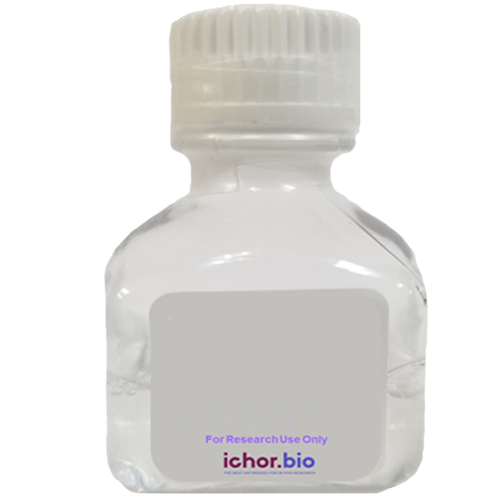Anti-Mouse PD-1 In Vivo Antibody – Ultra Low Endotoxin (29F.1A12)
- Sizes: 5mg, 25mg, 50mg, 100mg,
- Category: ichorbio, Ultra Low Endotoxin, anti-mouse
- Target: PD-1
- Clone: 29F.1A12
- Host: Rat
-
 Datasheet
Datasheet
 Tech Support
Tech Support

PRODUCT DETAILS
SPECIFICATIONS |
|
|---|---|
|
PRODUCT NAME |
Anti-Mouse PD-1 In Vivo Antibody - Ultra Low Endotoxin (29F.1A12) |
|
SPECIES REACTIVITY |
Mouse |
|
HOST |
Rat |
| SPECIFICITY |
Anti-PD-1 In Vivo Antibody - Ultra Low Endotoxin (29F.1A12) recognizes an epitope on Mouse PD-1. Despite its predicted molecular weight, PD-1 often migrates at higher molecular weight in SDS-PAGE. |
| PURIFICATION METHOD |
This monoclonal antibody was purified using multi-step affinity chromatography methods such as Protein A or G depending on the species and isotype. |
| ANTIGEN DISTRIBUTION |
Induced on splenic T and B lymphocytes, thymocytes, and myeloid cells after stimulation.Subset of double negative thymocytes, activated T and B cells |
| IMMUNOGEN |
PD-1 cDNA followed by PD-1-Ig fusion protein |
| CONCENTRATION |
|
| FORMULATION |
0.01 M phosphate buffered saline (PBS) pH 7.2 - 7.4, 150 mM NaCl with no carrier protein, potassium or preservatives added. |
| PURITY |
>98% by SDS-PAGE and HPLC |
| ENDOTOXIN |
≤ 0.75 EU/mg as determined by the LAL method |
| AGGRIGATION |
Aggregation level ≤ 1% |
| STORAGE CONDITION |
anti-PD-1 In Vivo Antibody - Ultra Low Endotoxin (29F.1A12) is stable when stored at 2-8°C for at least four (4) weeks. For long-term storage aseptically aliquot in working volumes without diluting and store at –80°C. Avoid Repeated Freeze Thaw Cycles. |
TARGET |
|
|---|---|
| TARGET |
PD-1 |
| CLONE |
29F.1A12 |
| SYNONYMS |
|
| BACKGROUND |
Programmed death-1 (PD-1), also know as CD279 is a 50-55 kD glycoprotein belonging to the CD28 family of the Ig superfamily. PD-1 is transiently expressed on CD4 and CD8 thymocytes as well as activated T and B lymphocytes and myeloid cells. Like the clones RMP1-14 and J43 antibodies, the 29F.1A12 antibody has been shown to block the binding of PD-1 to its ligands in vivo. |
| UNIPROT |
|
| PATHOGEN TEST |
We use the IMPACT test generated by IDEXX Laboratories to guarantee our Ultra Low Endotoxin antibodies are pathogen free. Our rat antibodies are tested for: |
| APPLICATIONS |
Flow Cytometry, Western Blot, Blocking, IHC (Frozen) |
| APPLICATION NOTES |
Western Blotting: To detect Mouse PD-1 this antibody can be used at a concentration of 30 µg/ml. |
| USAGE |
Products are for research use only. Not for use in diagnostic or therapeutic procedures. |


